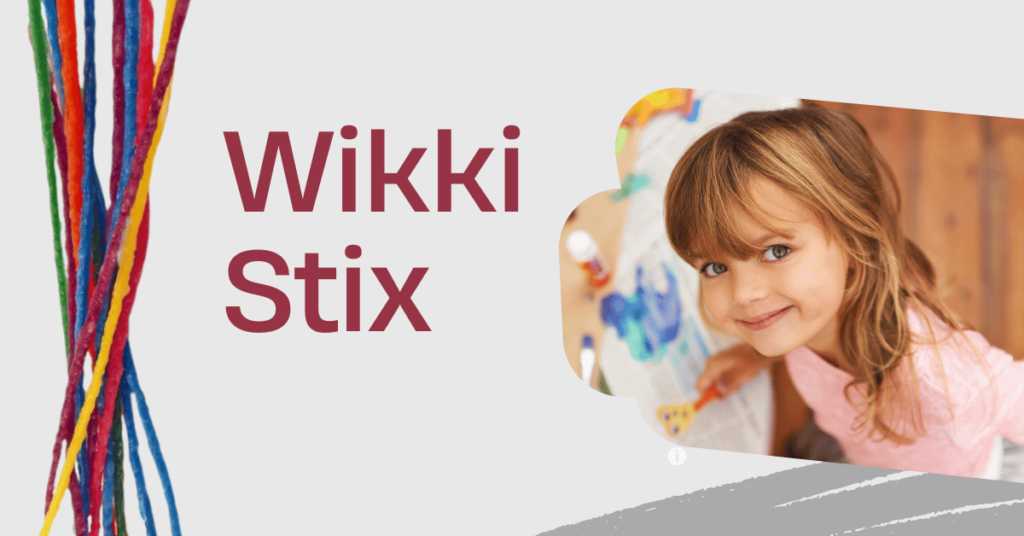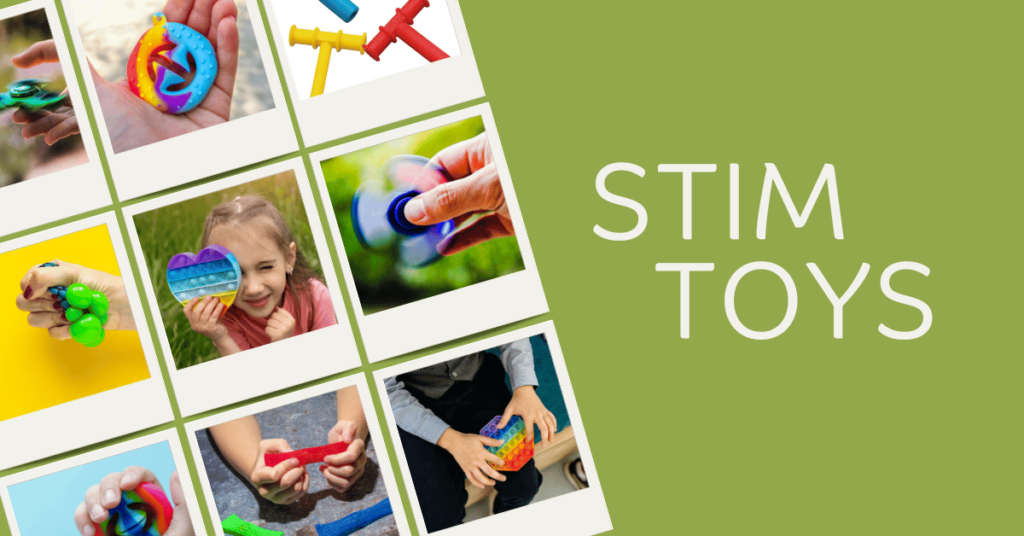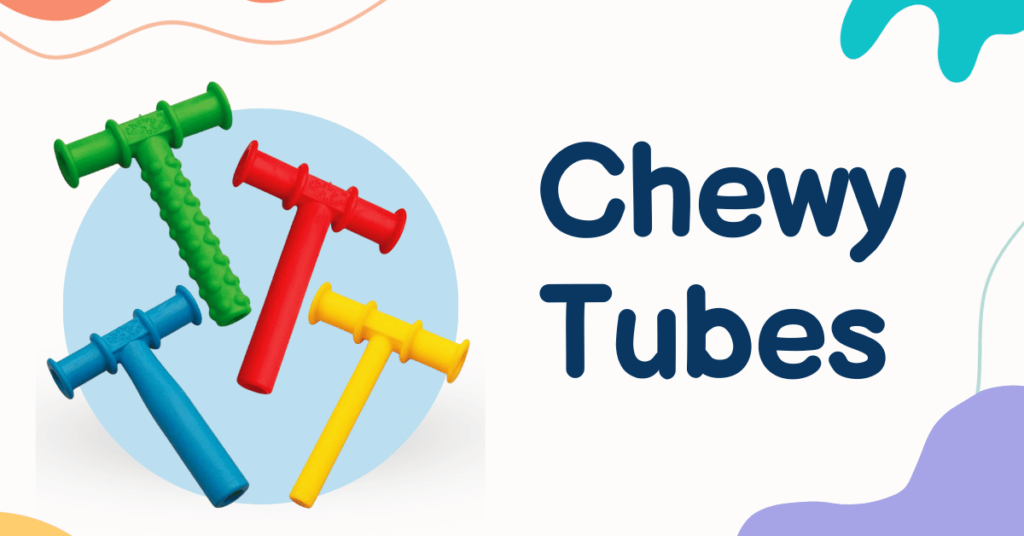Disclosure: This post may contain affiliate links. As an Amazon Associate, I earn from qualifying purchases. This means that if you click on a link and make a purchase, we may earn a commission at no additional cost to you. We only promote products we truly believe in, and your support helps us continue providing valuable content to our readers.
I. Introduction
Few educational and therapeutic tools are as versatile and engaging as Wikki Stix. They are pliable sticks of wax-coated yarn. You can find them in classrooms, therapy sessions, and homes. They serve a dual purpose that makes them truly exceptional. They are often recognized for their sensory benefits. They also shine as powerful tools for fine motor skill development.
In this article, we delve into the diverse world of Wikki Stix. We will explore their contribution to sensory play and the enhancement of fine motor skills. Let us understand the comprehensive advantages of this simple yet versatile tool. We may unlock their potential to empower individuals with diverse abilities.
II. What Are Wikki Stix?
Wikki Stix are slender, flexible, wax-coated yarn sticks. They can be bent, twisted, and molded into various shapes. They are vibrant in color and easy to manipulate. They can adhere to surfaces like paper, glass, and whiteboards without leaving any residue.
III. Benefits of Using Wikki Stix
1. Fine Motor Skill Development
Wikki Stix has a tactile nature. You can manipulate them by bending, shaping, or pressing. These characteristics help promote the refinement of fine motor skills. It includes improving hand strength, agility, and coordination. These fine motor skills are essential for various daily activities. These are essential in writing, buttoning clothes, using utensils, etc.
2. Sensory Engagement
Wikki Stix excels in providing tactile and visual sensory input. These are crucial for individuals with sensory processing needs. Its texture and flexibility stimulate the sense of touch, offering a unique sensory experience. This tactile engagement can help individuals with sensory sensitivities. They help them become more accustomed to different textures. They promote desensitization and increased comfort in various sensory environments.
Its vibrant colors additionally appeal to the sense of sight. They make sensory play visually stimulating. The combination of tactile and visual sensory elements creates a multisensory experience. They can be calming and enjoyable for individuals with special needs.
3. Versatility
One of the standout advantages of Wikki Stix is its versatility. You can adapt them to cater to different sensory preferences and sensitivities. For those who seek sensory input, you can use them to create textured and tactile designs. They can offer a sensory-rich experience. For those who may be sensitive to certain textures, you can use them to explore sensory play. They gradually become more comfortable with different tactile sensations at their own pace.
Furthermore, you can combine them with other sensory materials. You can combine them with scented oils or textured surfaces. It can further customize the sensory experience. This adaptability ensures that sensory play with Wikki Stix can be tailored to meet the specific needs of each individual.
4. Customizable Learning
One remarkable aspect of using them is the ability to customize learning experiences. Wikki Stix activities can be easily adapted. You can personalize them to suit individual needs, making them highly inclusive whether an individual has sensory-seeking tendencies or sensitivities. You can use them in ways that accommodate unique sensory profiles.
Educators and caregivers can modify the level of sensory input. They can introduce new textures gradually. They can adjust the complexity of the activities to ensure it is engaging and comfortable. This flexibility promotes an inclusive learning environment. A setup where individuals with diverse abilities can participate and thrive.
5. Boosted Confidence
Engaging in activities with Wikki Stix can profoundly impact an individual’s self-esteem. It can provide individuals with a sense of accomplishment.
These activities become a source of empowerment on multiple fronts. Individuals use them to create sensory-rich designs and explore different textures. As they do this, individuals gain a sense of mastery over their sensory experiences. It also hones their fine motor skills.
They help individuals build confidence in their sensory interactions and fine motor abilities. It contributes to a more positive self-image and greater independence. It can increase their willingness to engage in other learning activities. Increase their inclination to join social activities that demand fine motor skills.
IV. Fine Motor Skills Development Activities with Wikki Stix
These activities provide engaging and tactile ways to help strengthen hand muscles. They can also help improve coordination and enhance agility while having fun.
Primary Material Needed: Wikki Stix in various colors.
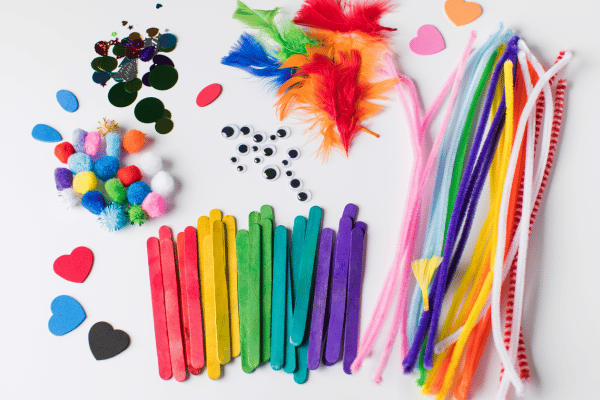
1. Wikki Weaving
Other Materials Needed: None
Instructions:
- Create a simple grid using Wikki Stix. Stick them onto a flat surface, like a piece of cardboard or paper, leaving small gaps between each stick.
- Take shorter pieces of Wikki Stix and weave them over and under the grid, just like a traditional weaving pattern.
- Encourage individuals to use their fine motor skills. Have them manipulate the Wikki Stix into the grid, creating a woven pattern.
- This activity helps improve hand-eye coordination, agility, and patience.
2. Wikki Lacing Cards
Other Materials Needed: Hole punch and cardboard.
Instructions:
- Cut out cardboard shapes like circles, squares, or animals.
- Use a hole punch to create evenly spaced holes around the edges of these shapes.
- Insert one end of a Wikki Stix into one of the holes. Let individuals lace it through the other holes, following the shape’s outline.
- This activity enhances hand strength, fine motor skills, and concentration.
3. Wikki Bead Threading
Other Materials Needed: Colorful beads with holes.
Instructions:
- Cut Wikki Stix into small segments.
- Provide individuals with colorful beads and the cut Wikki Stix.
- Encourage them to thread the Wikki Stix pieces through the holes in the beads. Have them create their bead designs.
- This activity enhances hand-eye coordination, finger dexterity, and patience.
4. Wikki Puzzles
Other Materials Needed: Printed puzzle templates (squares, triangles, or complex shapes with outlines).
Instructions:
- Print puzzle templates with various shapes on them.
- Cut the templates along the lines to create puzzle pieces.
- Use Wikki Stix to outline the shapes on the puzzle templates.
- Invite individuals to use their fine motor skills. Have them place the puzzle pieces correctly within the outlined shapes.
- This activity improves fine motor skills, spatial awareness, and problem-solving.
5. Wikki Tracing
Other Materials Needed: Printed tracing sheets (letters, numbers, or shapes).
Instructions:
- Place a printed tracing sheet on a flat surface.
- Use Wikki Stix to outline the shapes, letters, or numbers on the tracing sheet.
- Encourage individuals to use their fine motor skills to trace along the Wikki Stix lines.
- This activity supports fine motor skill development and letter/number recognition.
6. Wikki Fine Motor Mazes
Other Materials Needed: Printed maze templates.
Instructions:
- Print maze templates with various complexity levels.
- Attach Wikki Stix to create paths within the maze. Leave gaps for individuals to navigate.
- Provide individuals with a Wikki Stix stylus to guide them through the maze.
- This activity sharpens fine motor skills, attention to detail, and problem-solving abilities.
7. Wikki Tangrams
Other Materials Needed: Printed tangram puzzles.
Instructions:
- Print tangram puzzle templates or buy a tangram set.
- Create tangram pieces using Wikki Stix, matching the puzzle shapes.
- Invite individuals to manipulate the Wikki Stix tangram pieces to solve the puzzles.
- This activity promotes spatial reasoning, fine motor coordination, and geometric understanding.
8. Wikki Fine Motor Patterns
Other Materials Needed: None
Instructions:
- Create a sequence of patterns or designs using Wikki Stix.
- Encourage individuals to replicate the patterns by placing Wikki Stix accordingly.
- Gradually increase the complexity of the patterns for added challenge.
- This activity enhances fine motor control, visual perception, and concentration.
9. Wikki Sensory Letter Formation
Other Materials Needed: None
Instructions:
- Select soothing colors of Wikki Stix.
- Shape the Wikki Stix into letters, numbers, and shapes. Focus on proper formation.
- Encourage individuals to touch and explore the tactile creations.
- This activity supports early literacy, fine motor skills, and sensory input.
10. Wikki Pinch and Place
Other Materials Needed: Small objects (e.g., buttons, beads).
Instructions:
- Provide a variety of small objects and Wikki Stix.
- Encourage individuals to pick up the small objects using Wikki Stix as a tool. Place them into containers.
- This activity strengthens fine motor skills, hand-eye coordination, and the pincer grasp.
V. Sensory-Focused Activities with Wikki Stix
These activities provide diverse and engaging experiences suitable for individuals with special needs. They promote sensory exploration, creativity, and learning. They do these while catering to various sensory preferences and sensitivities.
Primary Material Needed: Wikki Stix in various colors.
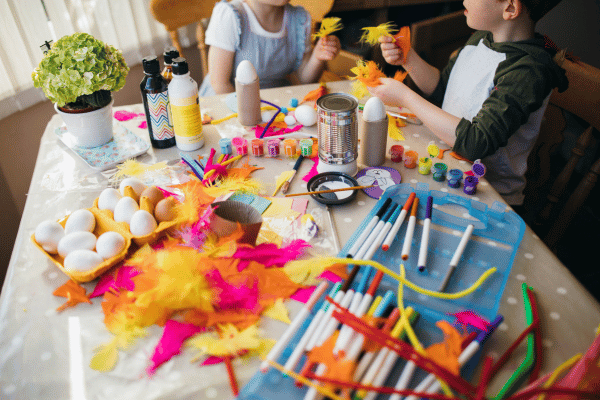
11. Wikki Sensory Stamping
Other Materials Needed: Ink pads and paper.
Instructions:
- Flatten a piece of Wikki Stix and bend it into a desired shape or pattern.
- Dip the shaped Wikki Stix into an ink pad of your choice.
- Press the inked Wikki Stix onto a sheet of paper to create colorful sensory stamps.
- Explore different textures by using various shapes and ink colors. This activity promotes sensory exploration through touch and sight.
12. Wikki Sensory Sculptures
Other Materials Needed: None
Instructions:
- Gather Wikki Stix with different textures and colors.
- Encourage individuals to sculpt sensory-rich creations like animals, plants, or abstract shapes.
- Explore the tactile qualities of the Wikki Stix as you mold them into various forms.
- This hands-on activity provides a calming sensory experience through touch and creative expression.
13. Wikki Texture Collage
Other Materials Needed: Cardboard or paper, and various textured materials (fabric scraps, sandpaper, foil, etc.).
Instructions:
- Prepare a piece of cardboard or paper as the base for the collage.
- Collect textured materials of different varieties.
- Use Wikki Stix to attach the textured materials to the base, creating a tactile collage.
- Encourage exploration of the collage’s textures by running fingers over the various surfaces. This activity engages the sense of touch and promotes sensory awareness.
14. Wikki Sensory Exploration Book
Other Materials Needed: Cardboard or heavy paper, and textured items (fabric, sandpaper, bubble wrap, etc.).
Instructions:
- Cut cardboard or paper into pages for a sensory exploration book.
- Attach different textured items to each page using Wikki Stix. Ensure that the items are securely fastened.
- Assemble the pages into a book format.
- Individuals can flip through the book. Feel and explore the various textures using their hands. This activity promotes sensory engagement and tactile awareness.
15. Wikki Sensory Maze
Other Materials Needed: A flat surface, and small objects with different textures.
Instructions:
- Create a sensory maze on a flat surface using Wikki Stix. Design a path with twists and turns.
- Place small objects with different textures (smooth, rough, bumpy) along the maze path.
- Individuals can navigate the maze using their fingertips. Have them feel the textures of the objects as they move along.
- This activity encourages tactile exploration. It also helps in fine motor skills development in a playful way.
16. Wikki Sensory Storytelling
Other Materials Needed: Textured materials (fabric, sandpaper, etc.) and a storytelling prompt.
Instructions:
- Provide a storytelling prompt or theme for the activity.
- Encourage individuals to use Wikki Stix and textured materials. Create sensory-rich scenes and characters related to the prompt.
- As they craft their sensory story elements, they can narrate a story. Incorporate sensory descriptions and tactile engagement.
- This activity enhances creative storytelling skills and sensory awareness.
17. Wikki Sensory Nature Art
Other Materials Needed: Collected natural materials (leaves, twigs, stones, etc.) and paper.
Instructions:
- Head outdoors to collect various natural materials with different textures.
- Return to an art-making space with your gathered items, Wikki Stix, and paper.
- Encourage individuals to use the Wikki Stix to attach the natural materials to the paper. Create a sensory nature art collage.
- This activity fosters a connection with nature, sensory exploration, and creative expression.
18. Wikki Sensory Alphabet
Other Materials Needed: A printout of the alphabet (uppercase or lowercase, depending on the focus).
Instructions:
- Provide a printout of the alphabet. Letters should be large enough to accommodate Wikki Stix.
- Encourage individuals to outline each letter using Wikki Stix. It adds texture and sensory input to the shapes.
- They can name the letters as they create the textured alphabet. It helps practice letter recognition and engage in tactile learning.
19. Wikki Sensory Patterning
Other Materials Needed: A flat surface.
Instructions:
- Offer a selection of Wikki Stix in different colors and textures.
- Invite individuals to create sensory patterns on a flat surface. They can use the Wikki Stix to make lines, shapes, or textured designs.
- Encourage exploration of color and texture combinations to create unique sensory patterns.
20. Wikki Sensory Mandala
Other Materials Needed: A circular template (or draw a circle).
Instructions:
- Provide a circular template or draw a circle on a flat surface.
- Offer Wikki Stix in different colors and textures.
- Encourage individuals to create a sensory mandala. Arrange Wikki Stix in a circular pattern, exploring textures and colors.
- This activity promotes relaxation, sensory engagement, and creativity.
VI. Wikki Stix, A Sensory and Fine Motor Marvel
Wikki Stix is an extraordinary tool that offers a wide range of benefits. It makes them a valuable addition to educational and therapeutic settings. They shine in two primary areas: fine motor skill development and sensory engagement.
Their tactile nature makes them ideal for honing fine motor skills such as hand strength, agility, and coordination. These are vital for daily activities. Simultaneously, they provide an immersive sensory experience through touch and sight. It makes them especially beneficial for individuals with sensory processing needs.
Their versatility sets them apart. You can tailor them to suit individual preferences and sensitivities. It ensures inclusivity in learning environments. This adaptability allows educators and caregivers to create customized learning experiences. It will enable them to gradually introduce new textures and complexity to suit each individual.
They offer a world of opportunities for learning and self-expression. It has a plethora of fine motor skills and sensory-focused activities. They empower individuals with diverse abilities. It helps them discover and thrive in their unique sensory journey.
VII. Frequently Asked Questions
Are Wikki Stix safe for children to use?
Yes, they are generally considered safe for children to use. They are made from non-toxic materials and do not leave any residue on surfaces. However, adult supervision is recommended, especially for younger children.
Can Wikki Stix be reused?
Yes, you can reuse them multiple times. They can be easily reshaped and molded into different forms. It makes them a cost-effective educational and sensory tool.
Are Wikki Stix suitable for individuals with sensory sensitivities?
Yes, they are known for their sensory benefits. Their pliable and tactile nature can help individuals with sensory sensitivities. They can help them become more accustomed to different textures and sensory experiences. However, it’s essential to introduce them gradually and at the individual’s pace.
Can Wikki Stix be used by adults or only children?
They can be used by individuals of all ages, including adults. They are versatile tools. They can benefit anyone looking to improve fine motor skills or engage in sensory play.
Where can I purchase Wikki Stix?
You can typically find them in most educational supply stores. You can also find them in toy stores or online retailers. They come in various packages, including classroom sets and individual packs. It makes them accessible for different needs.
How can you clean Wikki Stix after use?
They are easy to clean. You can wipe them with a damp cloth to remove dirt or residue. Avoid submerging them in water, as this may affect their texture.
Can you combine Wikki Stix with other sensory materials?
Yes, you can combine them with various sensory materials. You can combine them with scented oils or textured surfaces. You can do this to create a more customized sensory experience. This adaptability allows for endless possibilities in sensory play and learning.
How can I customize Wikki Stix activities for specific sensory preferences?
Wikki Stix activities are highly customizable. You can adjust the texture, color, and sensory elements. Adjust them according to individual sensory preferences and sensitivities. Experiment and find what works best for your loved ones.
Can you use Wikki Stix for sensory activities in group settings?
Absolutely! They are versatile. You can use them for collaborative sensory activities in group settings. It helps promote social interaction and sensory engagement.
Are any Wikki Stix creative play activities suitable for older kids and adults?
Certainly! You can use them for complex art projects and brainstorming sessions. You can also use them for team-building activities for older kids and adults.

